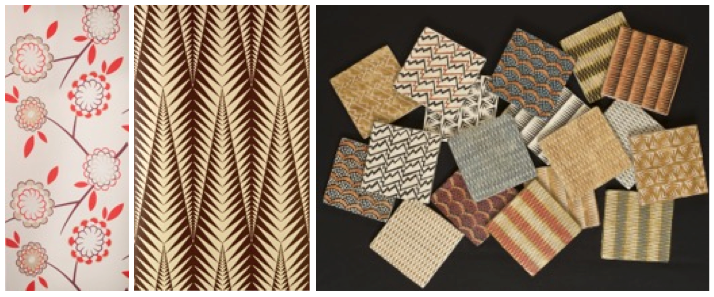PATERNISTA12/5/2017
This is an edited version of the article that Neisha Crosland has written in the London issue of Bridge for Design which is now out, so go grab a copy! It is so beautifully written that I wanted to share some of it here.
‘Pattern is innate in us - we have been at it since the beginning of mankind. Symbols and patterns were so important to primitive tribes and communities; they formed the basis of their languages and consequently, our visual and verbal language today. Really then, it’s no surprise that the word textile contains the word text and that the word pattern derives from the word pater, the Latin for father. As early as 40,000 years ago zig zag lines were etched on Ice Age mammoth teeth, the stripe appeared in prehistoric times and was bent at right angles to produce a zig zag, perhaps to represent the hostile-looking mountain range. In the cave paintings at Lascaux, animals were depicted and Oriental carpet often showed the stylised gardens in the oasis that the desert tribes hoped to find. In the early 8th century, chrysanthemums signified long life; the swastika signified light, and perhaps was a stylised version of a four - petalled flower, blooming when the weather was fruitful. Andean tribes wove dots and lines and suns into feather pieces; 16thcentury Ottoman craftsmen wove them into beautiful brocades – their patterns were as sophisticated and as beautiful and modern looking as anything today. 17th century Mughal painters and craftsman carved with exquisitely sensitive depictions of desert flowers into marble, neelam stone and pietra dura work. Then there are the William Morris designs or those 17th Century silks by Maria Garthwaite and James Leman. And on it goes - so you could argue that the groundwork has been done for us modern pattern makers. I have come to understand that a good pattern is one that people can to connect with – it must have a sense of familiarity about it, but at the same time the design must surprise them with its freshness. This is always a bit of a conundrum for the designer but the job of good design. I swing between having a desire to design geometrics and florals - sometimes mixing the two in one design. geometric patterns influenced by the dynamic abstractions of the Russian avant-garde and the Russian Art exhibition at The Royal Academy of Arts will no doubt inspire bold innovative design. I am inspired by artists like Malevich and Popova. The Japanese were very good at this in the 16th century with their kimono fabrics taking the simple knot and dye and the running thread technique but incorporating metal thread a wonderful hand painted depictions of nature. I always return to this and the Japanese sensibility is influencing pattern in both fashion and interiors. Right now, my studio walls are an oasis of flora bunda – Tulip block print fabrics for September and a floral tiles collection called FLORIS to is to be launched by De Ferranti. Nature arranges shapes so well, whether it’s the petal formation of a flower, or the lines on a shell - I find it quite astonishing that any of us pattern makers feel the need to do any re-arranging of our own. In the past decorative patterns were hand drawn, hand painted, hand carved, hand woven – all with skills that demanded patience, a lot of practise, real thought and close live examination of nature. Today images of plants or geometry can be scanned down loaded and with at the click on the key board manipulated to produce a pattern so easily. I worry that this has produced a slap dash trigger pulling attitude to pattern making which can lead to soulless results. I feel very lucky as I have the best of two worlds – the experience of pre-digital age Art school with lots of drawing painting and experimenting with print techniques without the distraction of computers combined with, the current digital age speed which enables me to work on several projects at once.’ Neisha Crosland www.neishacrosland.com Comments are closed.
Categories
All
Archives
April 2020
|


